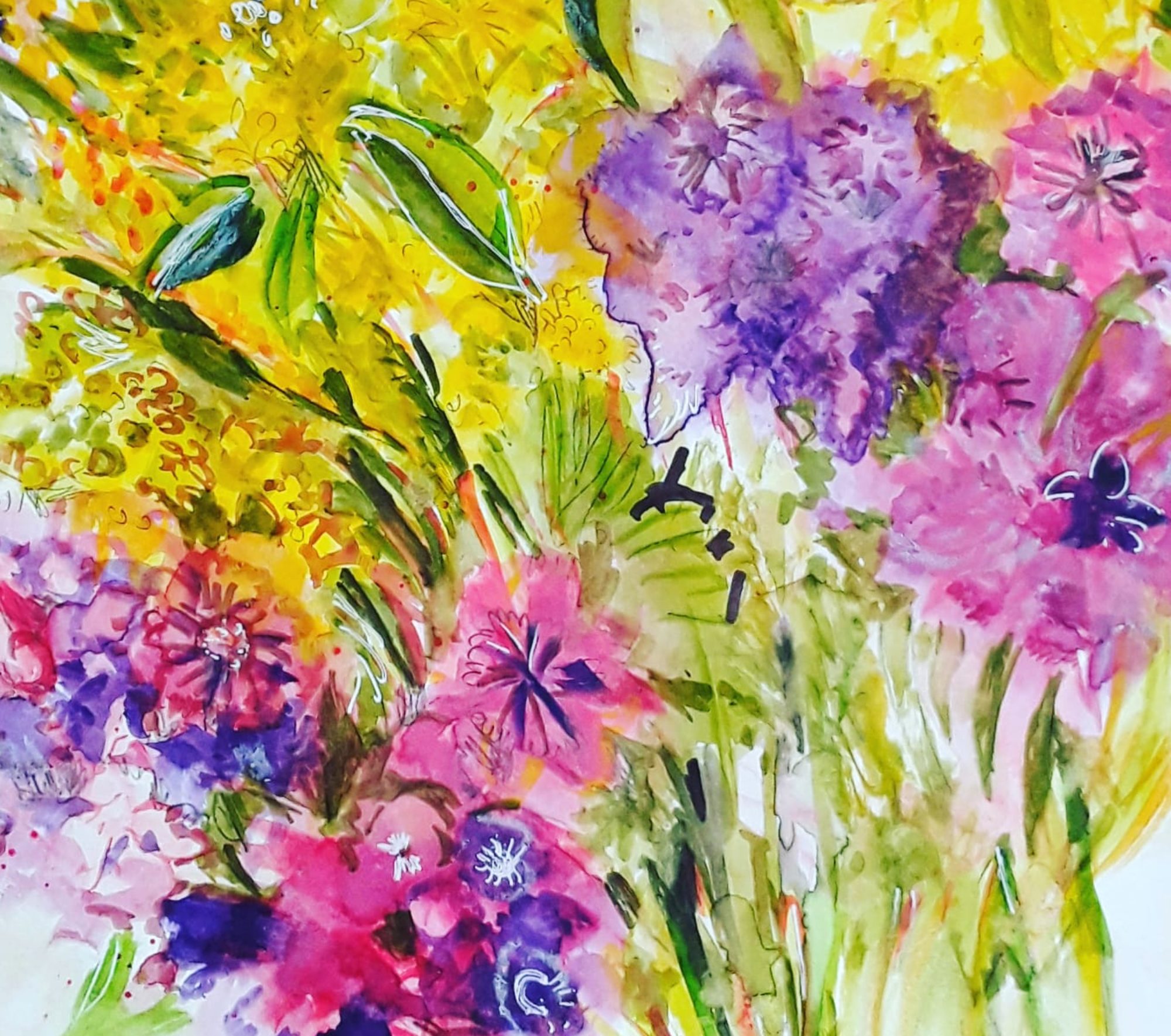
Good morning everyone. Over the past few weeks I’ve been thinking about painting portraits. As you can see, for this one I took the slightly unconventional idea of deliberately not using flesh coloured paint . And I used watercolour which is not as forgiving as acrylic. So I had to think carefully about where I placed the brush strokes. Actually, I wanted a chance to practise using tones to model the flesh, something I learnt on an online tutorial. And, because I didn’t use skin tones like pink , orange and brown, this allowed me to be a bit detached. Probably because I could just treat the task like a problem to be solved, instead of wanting to create a lifelike portrait. Anyway, I had a go, my watercolour skills are a bit basic, I know. On the other hand, I do feel like I learnt something from the exercise.
Painting portraits and modelling the flesh

Although I haven’t quite finished this portrait, this was the exercise I did during a tutorial hosted by Care Visions. In fact, I found it very helpful and the tutor John Skelcher skillfully guided us through the process. First of all, we sketched and checked that the proportions of the face were reasonably correct. Next we painted the face and neck with a mid tone. And then I added darker paint for shadowy areas and lighter colours for highlights. Finally I understood what I was trying to do, instead of adding too many shades and colours!
Incidentally, there was one other challenge in this session – we had to use the ‘ Zorn’ palette. Just to explain, an artist called Anders Zorn (1860 – 1920) made this choice of colours famous when he created his superb portraits in oils. For your information, the restricted palette consists of red, yellow ochre and black, with white allowed too. You could try it out — it’s amazing how many colour mixes you can create with this combination.
Drawing Faces on Toned Paper

Well, just to finish off with, in this portrait exercise, I used sepia pencil for the darker tones. Then the fawn coloured paper itself for the mid tones and white pastel for the highlights. Honestly, it sounds very simple, I know, but it’s taken me years to understand it!
By the way, I made this study with the aid of a photo provided by the tutor. Whereas, the first image I showed you – the green man – I created from my imagination. Because I’ve been studying the proportions of the face recently, I think I’ve managed to improve at this. And I made the painting look a bit like a real person! (Even though the eyes are not quite right!) If you want to see my baby angel portraits, see here for my tribute to Raphael.
































